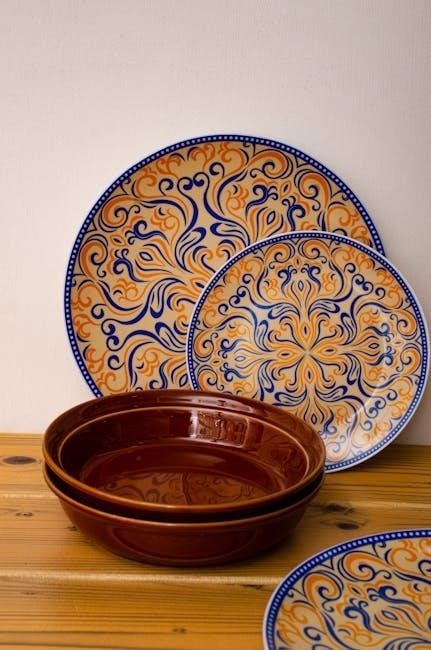code électrique québec pdf free download
The Canadian Electrical Code, adapted in Quebec, ensures safety and compliance in electrical installations․ It outlines standards for wiring, grounding, and emergency systems, guiding professionals in legal and safe practices․
Overview of the Canadian Electrical Code
The Canadian Electrical Code (CEC) provides comprehensive safety standards for electrical installations in Canada․ It covers design, installation, and maintenance of electrical systems, ensuring compliance with national safety protocols․ The code is regularly updated to reflect technological advancements and industry best practices․ In Quebec, the code is adapted to align with provincial regulations while maintaining core safety principles․ It includes sections on wiring methods, grounding, and emergency systems, serving as a critical reference for electricians and contractors․ Accessing the code is possible through official CSA publications or Quebec’s government website․
Importance of the Code in Quebec
The Canadian Electrical Code plays a vital role in Quebec, ensuring electrical installations meet strict safety standards․ It protects individuals and property from potential hazards, fostering a safe working and living environment․ Compliance with the code is legally mandated, enforced by local authorities and regulatory bodies like the RBQ․ Adherence prevents legal penalties, insurance issues, and reputational damage․ The code’s guidelines are essential for electricians, contractors, and homeowners, promoting reliability and efficiency in electrical systems across the province, while keeping pace with technological advancements․
Legal Framework and Compliance
The Canadian Electrical Code in Quebec is enforceable under provincial laws, requiring strict adherence to safety standards․ Compliance ensures legal operation, avoiding fines and penalties․ Authorities like the RBQ oversee enforcement, verifying installations meet code requirements․ Accessing the official code via CSA or LegisQuébec ensures accuracy․ Free resources and updates are available, though full compliance may require purchased versions․ Regular updates reflect technological advancements, and professionals must stay informed to maintain compliance and avoid legal consequences, ensuring public safety and system reliability․

History and Evolution of the Code
The Canadian Electrical Code has evolved to address technological advancements and safety needs․ Quebec adapts the code to regional requirements, ensuring compliance with provincial laws and safety standards․
Development of the Canadian Electrical Code
The Canadian Electrical Code (CEC) was first published in 1927 to standardize electrical installations nationwide․ Developed by the Canadian Standards Association (CSA), it ensures safety, efficiency, and consistency․ The code is updated every four years to reflect technological advancements and industry feedback․ Quebec adopts the CEC with provincial modifications, ensuring compliance with local regulations․ This collaborative approach guarantees that electrical systems meet rigorous safety standards while addressing regional needs․
Quebec’s Adaptation of the Canadian Code
Quebec adapts the Canadian Electrical Code to meet its unique needs, ensuring safety and efficiency․ The province collaborates with the Canadian Standards Association (CSA) to tailor the code to regional requirements․ Quebec’s adaptation includes specific provisions for local environmental conditions and safety standards․ This ensures compliance with both national and provincial regulations, maintaining high electrical safety standards․ The adapted code is enforced by the Régie du bâtiment du Québec (RBQ), guaranteeing its effective implementation across the province․
Key Milestones in Code Updates
The Canadian Electrical Code in Quebec has undergone significant updates over the years․ The 2021 edition introduced enhanced safety measures for arc fault protection and grounding requirements․ In 2018, updates focused on emerging technologies like renewable energy systems․ The 2015 edition emphasized energy efficiency and harmonization with international standards; These milestones reflect Quebec’s commitment to adapting the code to address technological advancements and safety priorities, ensuring it remains relevant and effective in safeguarding electrical installations across the province․
Structure and Content of the Code
The Canadian Electrical Code is divided into sections, covering general rules, wiring methods, and safety standards․ Appendices provide additional guidance, diagrams, and tables for clarity․
Organization of the Code
The Canadian Electrical Code is systematically organized into sections and parts for clarity; It begins with general requirements, followed by specific rules for installations, equipment, and safety measures․ The code includes numbered sections, subsections, and appendices for easy navigation․ Tables, diagrams, and definitions are provided to support complex topics․ This structured approach ensures that users can quickly locate relevant information, making it a practical tool for electricians, inspectors, and contractors in Quebec․
Key Sections and Their Significance
The Canadian Electrical Code in Quebec is divided into key sections that address specific aspects of electrical installations․ Section 0 covers scope and definitions, while Section 8 focuses on circuit loading and demand․ Sections 12-16 detail wiring methods, conductors, and raceways․ Sections 18-20 address hazardous locations, renewable energy systems, and electric vehicle charging․ These sections ensure safety, efficiency, and compliance with modern electrical standards, making them essential for professionals to understand and apply in their work․
Appendices and Reference Materials
The Canadian Electrical Code includes appendices that provide supplementary information essential for electrical installations․ These sections offer detailed diagrams, sample calculations, and explanatory notes to clarify complex requirements․ Reference materials include tables for conductor sizes, voltage drop calculations, and grounding methods․ Appendices also cover emerging technologies and special applications, ensuring practitioners have comprehensive resources for compliant installations․ These materials are invaluable for electricians, engineers, and contractors seeking to ensure safety and adherence to regulatory standards in Quebec․

Recent Updates and Amendments
The 2021 edition of the Canadian Electrical Code includes updates to safety standards, renewable energy integration, and new technologies․ These amendments ensure enhanced electrical system safety and efficiency․
Latest Revisions in the 2021 Edition
The 2021 edition of the Canadian Electrical Code introduces significant updates, including enhanced safety measures for arc fault protection, expanded requirements for electric vehicle charging systems, and improved guidelines for renewable energy installations․ These revisions aim to align with advancing technologies and address emerging electrical safety challenges․ Additionally, the code now includes more detailed provisions for energy efficiency and the safe integration of smart home devices․ These updates reflect a commitment to modernizing electrical standards while ensuring public safety and infrastructure reliability in Quebec․
Impact of Updates on Electrical Installations
The 2021 code updates significantly influence electrical installations in Quebec, requiring enhanced safety protocols and compliance with new standards․ Installers must now incorporate updated wiring methods, arc fault protection, and renewable energy integration․ Non-compliance can result in system failures or legal penalties․ Contractors and electricians must adapt to these changes to ensure installations meet current safety and efficiency requirements․ Staying informed about these updates is crucial for maintaining compliance and delivering reliable electrical systems․
Transition Periods for Compliance
Transition periods for compliance with updated electrical codes in Quebec allow stakeholders to adapt to new requirements without immediate penalties․ Typically, a grace period of 6 to 12 months is provided after code revisions․ During this time, both old and new standards may be accepted, ensuring a smooth transition․ Contractors and electricians must plan accordingly to avoid non-compliance issues post-transition․ Local authorities often announce these periods, providing clear guidance to help stakeholders prepare effectively for the enforcement of updated regulations․

Safety Standards and Best Practices
The Canadian Electrical Code in Quebec emphasizes grounding, bonding, and arc fault protection․ Regular inspections and proper wiring methods ensure reliability; Overcurrent devices safeguard against hazards․
Grounding and Bonding Requirements
Grounding and bonding are critical for electrical safety in Quebec, ensuring proper current flow and equipment protection․ The code specifies grounding electrodes, conductors, and bonding methods․
Non-compliance risks shocks, fires, and equipment damage․ Regular inspections and adherence to code standards are essential for maintaining safe electrical systems and preventing hazards․
Arc Fault Protection and AFCI Requirements
Arc fault protection is essential for preventing electrical fires caused by arcing faults․ The Canadian Electrical Code in Quebec mandates the installation of Arc Fault Circuit Interrupters (AFCIs) in specific circuits, such as bedroom outlets and older wiring systems․ AFCIs detect and interrupt dangerous arcing conditions, significantly reducing fire hazards․ Compliance ensures enhanced safety in residential and commercial electrical systems, aligning with Quebec’s rigorous safety standards․ Regular inspections and updates are crucial to maintain protection and adhere to evolving code requirements․
Emergency Systems and Backup Power
Emergency systems and backup power installations are critical for ensuring safety during electrical outages․ The Canadian Electrical Code in Quebec requires these systems to be designed and installed according to specific standards․ Backup generators, UPS systems, and emergency lighting must be properly integrated into electrical infrastructure․ Regular testing and maintenance are mandatory to guarantee reliability․ Compliance with these requirements ensures continuous power supply in critical situations, protecting both people and property․ Adherence to the code is essential for meeting safety and operational standards in Quebec․

Electrical Installation Requirements
Electrical installations in Quebec must adhere to the Canadian Electrical Code, ensuring safety, efficiency, and compliance with local regulations․ Proper materials and methods are essential to prevent hazards․
Wiring Methods and Materials
In Quebec, wiring methods and materials must comply with the Canadian Electrical Code to ensure safety and efficiency․ Approved wiring methods include conduit systems, cable assemblies, and raceways․ Materials like copper or aluminum conductors are specified for their durability and conductivity․ Proper insulation and shielding are required to prevent electrical hazards․ The code also outlines standards for connectors, junction boxes, and grounding systems․ Regular inspections are mandatory to verify compliance with these specifications․ Referencing the official code électrique Québec PDF ensures accurate implementation of these guidelines․
Circuit Sizing and Load Calculations
Circuit sizing and load calculations are critical for ensuring electrical systems operate safely and efficiently․ The Canadian Electrical Code outlines methods to determine conductor sizes based on load requirements, voltage drop, and safety margins․ Continuous and non-continuous loads must be considered, along with applicable safety factors․ Proper calculations prevent overheating, ensure adequate power supply, and comply with code standards․ Grounding and bonding requirements are also integral to these calculations․ Consulting the official code électrique Québec PDF ensures accurate implementation of these guidelines for safe and reliable electrical installations․
Overcurrent Protection Devices
Overcurrent protection devices, such as circuit breakers and fuses, are essential for safeguarding electrical systems from short circuits and overloads․ The Canadian Electrical Code specifies requirements for selecting, installing, and maintaining these devices to ensure protection of people and property․ Proper sizing and rating of overcurrent devices are critical to prevent damage and hazards․ The code électrique Québec PDF provides detailed guidelines for compliance, ensuring electrical systems operate safely under various conditions․ Regular inspections and maintenance of these devices are mandatory to uphold safety standards and prevent potential failures․

Permits and Inspections
Ensure permits and inspections are crucial for ensuring compliance with the Canadian Electrical Code in Quebec․ They provide a framework for safe electrical installations and are detailed in official guides․
When a Permit is Required
A permit is mandatory for most electrical installations in Quebec, as outlined in the Canadian Electrical Code․ It is required for new constructions, renovations, or significant upgrades to electrical systems․ Homeowners or contractors must apply through local authorities, providing detailed plans and specifications․ The permit ensures compliance with safety standards and regulations․ Failure to obtain a permit can result in fines or project halts․ Licensed professionals typically handle the application process to avoid delays․ Always verify requirements before starting any electrical work to ensure adherence to legal and safety guidelines․
Inspection Process and Checklist
The inspection process ensures electrical installations meet the Canadian Electrical Code standards in Quebec․ Conducted by certified inspectors, it verifies compliance with safety and technical requirements․ Inspections are typically required after significant work is completed but before final approval․ A detailed checklist is used to evaluate wiring, grounding, circuit breakers, and other components․ This process helps identify potential hazards and ensures systems function safely․
The checklist includes verifying proper installation of overcurrent devices, arc fault protection, and grounding systems․ Inspectors also check for correct labeling and signage․ Any deficiencies must be corrected before approval․ Regular inspections maintain electrical safety and prevent future issues, ensuring compliance with Quebec’s electrical regulations․
Role of Local Authorities
Local authorities in Quebec play a crucial role in enforcing the Canadian Electrical Code․ They oversee permit issuance, inspections, and compliance with safety standards․ These authorities ensure that electrical installations meet code requirements and conduct regular audits․ They also interpret code provisions for specific cases and provide guidance to electricians and contractors․ Local authorities collaborate with provincial bodies to adapt the code to regional needs, ensuring public safety and legal compliance․ Their oversight is essential for maintaining electrical safety standards across Quebec․

Licensing and Professional Qualifications
Licensing and professional qualifications are essential for electricians and contractors in Quebec․ A valid license ensures expertise in code compliance and safe electrical installations․ Certification is mandatory․
Electrician Licensing in Quebec
In Quebec, electricians must hold a valid license to practice, ensuring compliance with the Canadian Electrical Code․ Licensing requires completing an apprenticeship, passing a certification exam, and meeting provincial standards․ The license verifies expertise in electrical systems, safety protocols, and code adherence․ It is issued by the Régie du bâtiment du Québec (RBQ) and must be renewed periodically․ Practicing without a license is illegal and can result in penalties․ The licensing process ensures professionals are qualified to perform safe and code-compliant electrical work․
Contractor Certification Requirements
In Quebec, contractors working with electrical systems must meet specific certification requirements․ The Régie du bâtiment du Québec (RBQ) oversees these certifications, ensuring contractors adhere to the Canadian Electrical Code․ Certification involves demonstrating expertise in electrical installations, safety standards, and code compliance․ Contractors must also carry liability insurance and maintain ongoing professional development․ These requirements ensure contractors deliver safe and reliable electrical services․ Non-compliance can result in penalties, emphasizing the importance of proper certification for public safety and code adherence․
Continuing Education and Training
Continuing education is crucial for electrical professionals in Quebec to stay updated on the Canadian Electrical Code․ The Régie du bâtiment du Québec (RBQ) mandates ongoing training to ensure compliance with safety standards and code revisions․ Workshops, online courses, and seminars are available through approved providers․ These programs cover updates in grounding, arc fault protection, and emergency systems․ Regular training ensures professionals maintain certifications and deliver safe installations․ Employers often support these efforts to uphold industry standards and avoid penalties․ Continuous learning is essential for adapting to evolving electrical safety requirements․

Penalties for Non-Compliance
Non-compliance with the Canadian Electrical Code in Quebec can result in significant fines, legal actions, and project shutdowns․ Penalties may also include increased insurance premiums and reputational damage․
Fines and Legal Consequences
Non-compliance with the Canadian Electrical Code in Quebec can lead to substantial fines and legal consequences․ Fines range from $5,000 to $25,000 or more for severe violations․ Legal actions may include court summons, penalties, and even criminal charges if negligence results in safety hazards or accidents․ These consequences underscore the importance of adhering to the code to avoid financial and legal repercussions․ Understanding and adhering to the code is essential for electrical safety and compliance․
Impact on Insurance and Liability
Non-compliance with the Canadian Electrical Code in Quebec can significantly impact insurance and liability․ Insurance companies may deny claims or cancel policies if electrical systems do not meet code requirements․ Additionally, property owners or contractors may face liability for damages or injuries resulting from non-compliant installations․ This financial and legal exposure highlights the importance of adhering to the code to ensure coverage and minimize risks․ Compliance is essential for protecting assets and avoiding costly legal battles․
Reputation and Business Consequences
Non-compliance with the Canadian Electrical Code in Quebec can severely damage a business’s reputation․ Clients may lose trust in a company that fails to meet safety standards, leading to negative reviews and loss of future contracts․ Additionally, businesses risks losing partnerships and facing financial losses due to non-compliance․ This can also harm long-term stability and growth opportunities․ Maintaining code compliance is crucial to uphold professional integrity and ensure customer confidence in electrical services․

Accessing the Code
Accessing the Canadian Electrical Code in Quebec is straightforward via official sources and digital platforms, ensuring professionals can obtain necessary guidelines efficiently․
Official Sources for the Code
The Canadian Electrical Code in Quebec can be accessed through official CSA Group publications․ The CSA Group website offers the most reliable source for purchasing or downloading the code․ Additionally, the Quebec government provides references to the code through their official portals․ While free PDF downloads may not be readily available due to copyright restrictions, official excerpts and summaries are often accessible․ Always ensure compliance by referencing legitimate sources to stay updated with the latest regulations and standards․
Free Resources and Excerpts
While the full Canadian Electrical Code is not available for free, certain excerpts and summaries can be accessed through official CSA Group resources․ Some government and industry websites offer free sections or guides based on the code․ Additionally, educational institutions and libraries may provide limited access to the document․ Always verify the source to ensure accuracy and compliance with the latest standards․ Free downloads of the full code are restricted due to copyright, but official references are available for guidance and study purposes․
Subscription and Purchase Options
The Canadian Electrical Code can be purchased directly from CSA Group or authorized distributors․ Options include hardcopy, digital, or subscription-based access․ Subscriptions often provide updates and revisions automatically․ Purchase ensures compliance with the latest standards and full access to all sections․ While free downloads are unavailable due to copyright, official purchases guarantee accuracy and reliability․ Visit CSA Group’s website or authorized sellers to explore purchase options tailored to individual or organizational needs․

Additional Resources
Explore official CSA Group resources, including guides and training materials, to supplement your understanding of the Canadian Electrical Code․ Visit the Régie du bâtiment du Québec website for additional support and updates tailored to Quebec’s electrical standards․
Guides and Interpretations
Official guides, such as the CSA Group’s Canadian Electrical Code Handbook, provide in-depth interpretations and practical examples․ These resources help clarify complex requirements and ensure compliance․ Additionally, the Régie du bâtiment du Québec offers free downloadable documents, including interpretation bulletins and technical guides, to assist with understanding specific sections of the code․ These materials are essential for electricians, contractors, and designers seeking to align their work with Quebec’s electrical standards․ Always consult official sources to ensure accuracy and compliance․
Training and Workshops
Various training programs and workshops are available to help professionals master the Canadian Electrical Code in Quebec․ The CSA Group and Régie du bâtiment du Québec offer courses, both in-person and online, to explain code requirements and updates․ These sessions cover topics like safety standards, wiring methods, and compliance․ Many workshops include hands-on exercises and Q&A sessions with experts․ Some organizations provide free or low-cost training resources, especially for licensed electricians and contractors․ These programs ensure professionals stay updated and compliant with the latest electrical codes and regulations․
Industry Associations and Support
Industry associations play a crucial role in supporting professionals working with the Canadian Electrical Code in Quebec․ Organizations like the Corporation des maîtres électriciens du Québec (CMEQ) and Electro-Federation Canada (EFC) provide resources, training, and advocacy․ These groups help professionals stay updated on code changes and best practices․ Members gain access to networking opportunities, workshops, and exclusive materials․ Additionally, these associations often collaborate with regulatory bodies to ensure the code is applied effectively, fostering a culture of safety and compliance across the province․
The Canadian Electrical Code in Quebec ensures safety and compliance, guiding professionals through standardized practices․ Accessing resources like the code électrique québec pdf supports adherence and innovation․
Final Thoughts on Code Compliance
Adhering to the Canadian Electrical Code in Quebec is essential for ensuring safety, legality, and reliability in electrical installations․ Compliance not only prevents hazards but also avoids legal penalties and financial losses․ Staying informed about updates and accessing resources like the code électrique québec pdf is crucial for professionals․ By following the code, electricians and contractors maintain credibility and contribute to a safer built environment․ Regular updates ensure the code aligns with advancing technologies and safety standards, making compliance a cornerstone of responsible practice․
Encouragement for Ongoing Learning
Continuous learning is vital for mastering the Canadian Electrical Code in Quebec․ The electrical field evolves rapidly, with updates to safety standards and technologies․ Professionals are encouraged to stay informed through resources like the code électrique québec pdf, which offers free access to essential guidelines․ Engaging in workshops, online courses, and industry forums ensures adherence to best practices․ By committing to lifelong learning, electricians and contractors enhance safety, efficiency, and compliance, contributing to a culture of excellence in electrical work․
Future Developments in Electrical Safety
The future of electrical safety in Quebec is poised for significant advancements․ Emerging technologies, such as smart grids and renewable energy systems, will require updated standards․ The code électrique québec pdf will play a crucial role in adapting to these innovations․ Expect enhanced focus on energy efficiency, arc fault protection, and integration of new materials․ Professionals should anticipate regular updates to the code, ensuring safety keeps pace with technological progress․ Staying informed through resources like the free PDF ensures readiness for these changes․


























































































